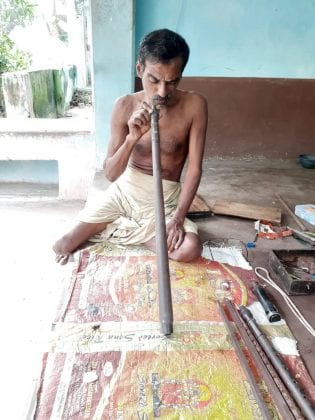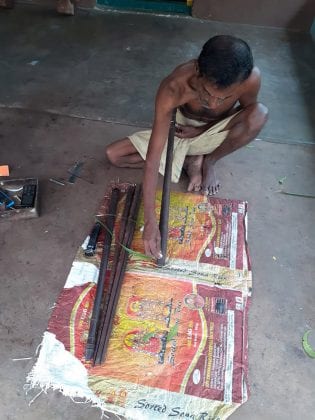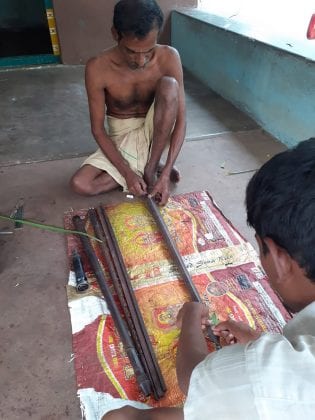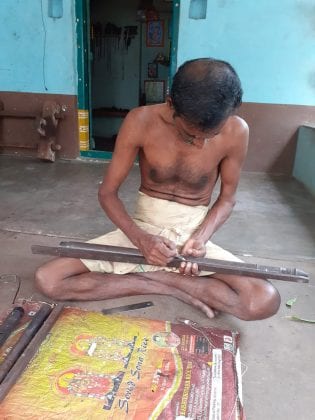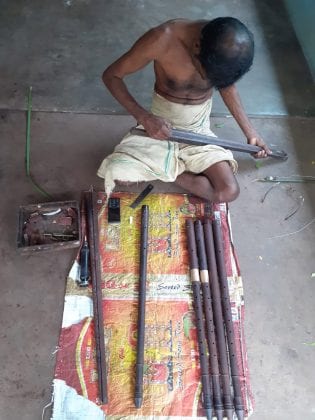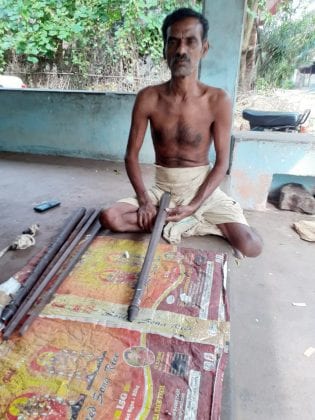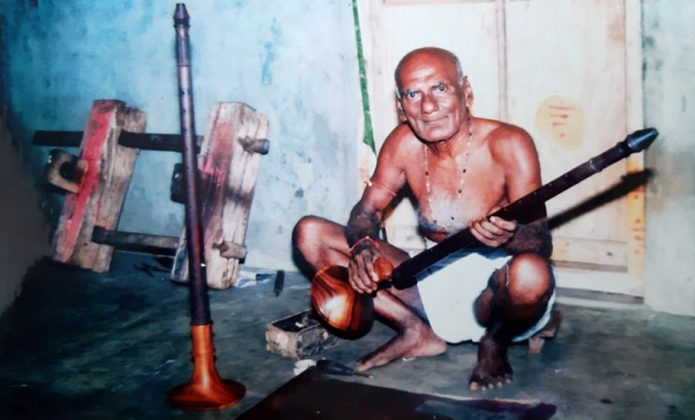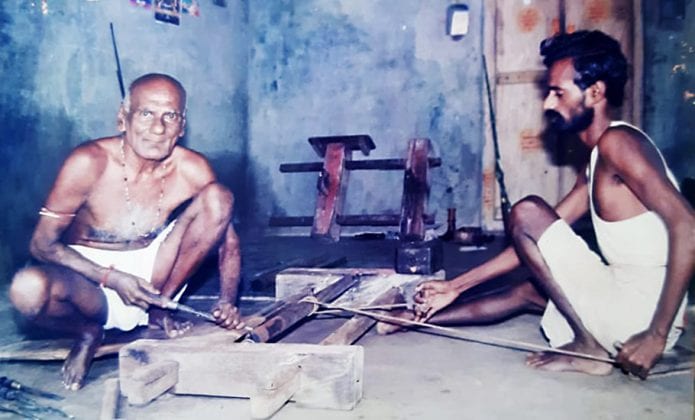
- Home
- News
- Analysis
- States
- Perspective
- Videos
- Education
- Entertainment
- Elections
- World Cup 2023
- Features
- Health
- Business
- Series
- Economy Series
- Earth Day
- Kashmir’s Frozen Turbulence
- India@75
- The legend of Ramjanmabhoomi
- Liberalisation@30
- How to tame a dragon
- Celebrating biodiversity
- Farm Matters
- 50 days of solitude
- Bringing Migrants Home
- Budget 2020
- Jharkhand Votes
- The Federal Investigates
- The Federal Impact
- Vanishing Sand
- Gandhi @ 150
- Andhra Today
- Field report
- Operation Gulmarg
- Pandemic @1 Mn in India
- The Federal Year-End
- The Zero Year
- Premium
- Science
- Brand studio
- Home
- NewsNews
- Analysis
- StatesStates
- PerspectivePerspective
- VideosVideos
- Entertainment
- ElectionsElections
- Sports
- Loading...
Sports - Features
- BusinessBusiness
- Premium
- Loading...
Premium
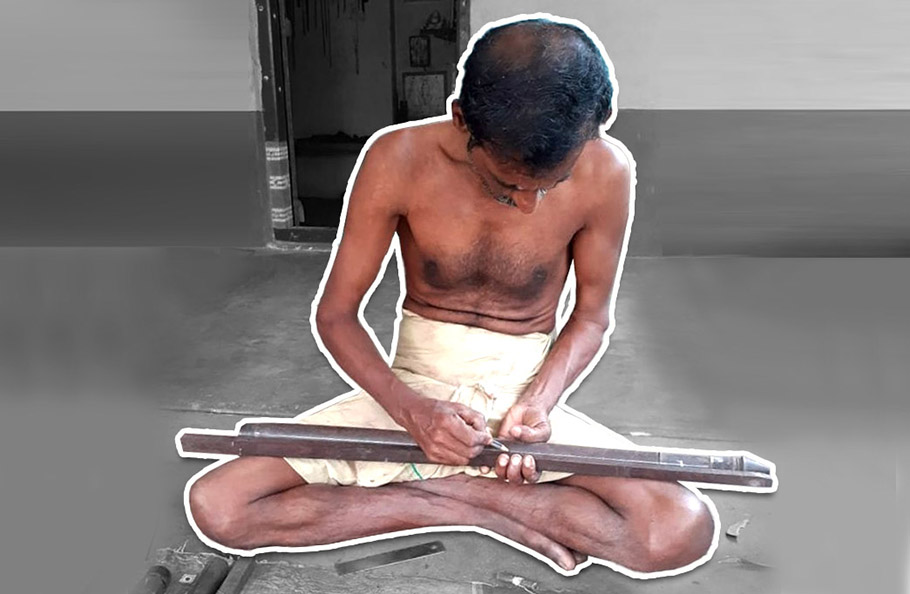
Instrumental role: The last of the nadaswaram makers
Far away from the music of Margazhi in good old Madras (now Chennai), Nadaswaram makers, like the family of Ranganatha Aasaari, quietly toil away in a nondescript Tamil Nadu village called Narasingapettai.

“The lord of nadaswarams, I hereby say that I have played nadaswarams bought from many places. But none of them played the ‘Suddha Maddhyamam’ raga. Whereas, in a place called Narasingapettai, half a kilometre from Thiruvavuduthurai, there is a traditional nadaswaram maker NGN Ranganatha Aasaari, who gave me a 6-hole nadaswaram. That particular instrument plays the above said...
“The lord of nadaswarams, I hereby say that I have played nadaswarams bought from many places. But none of them played the ‘Suddha Maddhyamam’ raga. Whereas, in a place called Narasingapettai, half a kilometre from Thiruvavuduthurai, there is a traditional nadaswaram maker NGN Ranganatha Aasaari, who gave me a 6-hole nadaswaram. That particular instrument plays the above said raga beautifully and effortlessly. I found no flaw in this instrument. Hence, I request the government to acknowledge the skill of Ranganatha Aasaari and honour him.”
These lines were written and signed by none other than the famous nadaswaram virtuoso, Thiruvavuduthurai TN Rajarathinam Pillai. With the guidance of Pillai, Ranganatha Aasaari made a nadaswaram, a double-reed wind instrument, which has 2 and 2.5 kattai (a musical unit) and which was named Paari nadaswaram.
Before this, the Timiri nadaswaram, which has 5 and 5.5 kattai, was in use. But that needed more lung power for the nadaswaram player whereas the Paari nadaswaram could be played effortlessly.
Although unrecognised, Ranganatha Aasaari left an indelible mark on the wooden instrument. And that craftsmanship is being continued by his son and grandsons in their village Narasingapettai, 275 km from Chennai, in the Thanjavur district of Tamil Nadu, after his death. He would have turned 100 this year.
“Ours is the fourth-generation nadaswaram making family,” says NR Selvaraj, Ranganatha Aasaari’s second son.
Besides Selvaraj’s family, there are three other families who make nadaswaram in Narasingapettai — the NLK Sakthivel Aasaari family, the NLS Kannan Aasaari family and the GAP Sundararajan Aasaari family.
But Selvaraj points out that only his and Sundararajan’s families still make nadaswarams by hand whereas the others use machines to make the instrument.
Govindasamy Aasaari, father of Ranganatha Aasaari, learnt the craft of making nadaswarams at Mayavaram, near Narasingapettai village. He passed on the skill to Ranganatha Aasaari, and Selvaraj followed suit after completing his Class 10.
“It was the early 80s and I had no other go. This is all what my family knows,” says Selvaraj.
Now, his sons Prakash and Sathish have stepped in to continue the family tradition even though they have completed diploma and bachelors in engineering respectively.
Making of a nadaswaram
Nadaswaram is made from Aacha (Indian Blackwood) tree. About four nadaswarams can be made from one tree. These trees are largely found in Villupuram and Puducherry.
“An aacha tree costs ₹4,000–₹5,000. But the number of Aacha trees is gradually declining. So I tried to use the Rosewood tree. But when played, the body heat of the nadaswaram player goes up (as the player needs to exert more pressure to blow wind). So, we went back to Aacha,” says Selvaraj.

It takes three days to make an instrument, which is then sold for ₹5,000-₹6,000. In a year, Selvaraj’s family is able to make 40 nadaswarams.
Selvaraj and other nadaswaram makers spend their entire life only on making the instruments. They never even get the time to learn to play it. When asked about it, Selvaraj said that their duty restricts them to only making the instruments.
“All our days are spent in making the instruments. We don’t have time to learn to play,” he says.
Players awarded, makers avoided
After Rajarathinam Pillai began using Ranganatha Aasaari’s nadaswaram, another exponent Karakurichi Arunachalam followed suit and he even used one for the song Singara velane deva in the 1962 film Konjum Salangai (Enticing Anklets).
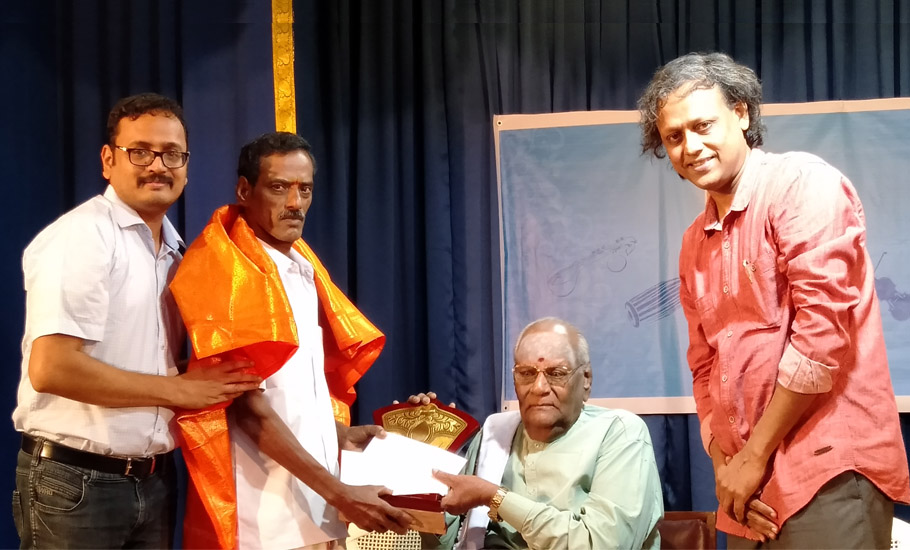
Following them, many other exponents like Mambalam Siva, Keezhur Ganesan, Chennai Mohandas, Seshampatti Sivalingam have taken up the Ranganatha Aasaari family-made nadaswaram.
“To be terse, all those who have won Kalaimamani awards for nadaswaram are using our instruments,” says Selvaraj, brimming with pride.
He was recently honoured with ‘Parlandu Award of Excellence’ by Parivadini, a YouTube channel dedicated to Carnatic music. This award is given exclusively for instrument makers, since there are no other honours to encourage their prowess.
“We get awards only from these kinds of musical groups here and there. Even sabhas are not acknowledging us, let alone the government. The state government is not even considering as a craftsmen,” Selvaraj rues.
Lalitha Ram, one of the founders of Parivadini, says that the idea for instituting such an award came out of a casual conversation with a musician.
“In 2013, while speaking with a mridangist, Trivandrum Balaji, he said that there is no recognition for musical instrument makers,” she says.
Even Ranganatha Aasaari himself had written a letter to the government requesting to acknowledge him by giving him pension or to confer Kalaimamani award, says Ram.
“Ranganatha Aasaari never tried to get a patent or copyright for his invention. So other nadaswaram makers starting adopting his invention and now it has lost its uniqueness,” she says.
Only when films like Sarvam Thala Mayam, directed by Rajeev Menon starring GV Prakash Kumar, comes, which was loosely based on the life of Fernandes, a mridangam maker, such kinds of instrument makers are taken note of by the public, says Ram.
Injikkudi Mariappan, a nadaswaram exponent, says that the government doesn’t even recognise them as an indigent artistes.
“Nadaswaram makers like Selvaraj are financially supported often only by nadaswaram players like us. Other than instrument-making, they don’t have other sources of income,” he says.
But Selvaraj’s dedication and interest in making nadaswarams does not seem like it will be dampened by the neglect of the government or the public.
“If nadaswaram players support me while making the instruments by sitting beside me and playing my instrument at every step, I can bring new developments to the existing nadaswarams,” he says confidently.
(Note: The video The Nadaswaram makers of Narasingapettai was made by Aparna Karthikeyan and published in the People’s Archive of Rural India on April 13, 2015.)

